Use the CDC’s STEADI initiative to enhance patient safety.
Takeaways:
- Fall-related death rates among adults 65 and older continue to rise, with older long-term care facility residents at greater risk than those living in the community.
- The most successful fall-prevention programs are multifaceted, cohesive, and comprehensive.
- CDC’s Stopping Elderly Accidents, Deaths, and Injuries (STEADI) initiative offers a standardized, systematic approach to fall prevention.
On November 8, 2019, Ms. Jane Broom’s* heirs filed a lawsuit against Holy Acres Nursing Home claiming negligence. Ms. Broom was admitted to the nursing home after a stroke that left her with right-sided weakness and neglect as well as loss of peripheral vision. In her post-stroke state, she required assistance with walking, transfers, toileting, and other activities of daily living. Her medications included lisinopril and simvastatin. Upon admission, Holy Acres failed to classify Ms. Broom as a fall risk and didn’t initiate a fall-prevention plan. The next day, a nurse found Ms. Broom on the floor between her bed and the bathroom. She experienced a fractured collarbone, a dislocated shoulder, and a head injury that led to brain herniation. She slipped into a coma and died in the hospital 6 days later.
This story isn’t unusual. Although many initiatives and regulations govern long-term care (LTC) facilities and fall prevention, falls in these settings remain a nearly intractable problem. In 2018, according to the Centers for Disease Control and Prevention (CDC), approximately 3 million emergency department visits, more than 950,000 hospitalizations, and nearly 32,000 deaths resulted from fall-related injuries among adults over age 65 in the United States. Fall-related death rates among this population continue to rise, with older LTC facility residents at greater risk than those living in the community.
In addition to increased healthcare costs, falls impact individual quality of life due to depression and fear of falling. Many older adults who’ve experienced a fall avoid activities in which they can still participate.
Standardized, systematic approach to fall prevention
The most successful fall-prevention programs, such as the CDC’s Stopping Elderly Accidents, Deaths, and Injuries (STEADI) initiative, are multifaceted, cohesive, and comprehensive. Although STEADI was developed for primary care settings, it’s been effectively adapted for use in clinics, hospitals, pharmacies, physical therapy practices, home safety programs, and assisted living facilities. (See Hospital setting outcomes.)
Hospital setting outcomes
The Centers for Disease Control and Prevention describes a 2-year study at the Rees-Jones Trauma Center in Dallas, Texas, where the Stopping Elderly Accidents, Deaths, and Injuries (STEADI) initiative was implemented. Study results indicate that the initiative improved patient outcomes and led to a statistically significant decreased length of stay (from 7.9 to 6.5 days). These results demonstrate that STEADI’s principles can positively impact patient outcomes.
The STEADI initiative consists of three main components: screen, assess, and intervene. Providers screen older adults for fall risk, assess their specific modifiable risk factors, and intervene by reducing the identified risks. Many fall-prevention plans have failed due to lack of provider knowledge, difficulty accessing information, time constraints, lack of patient and family involvement, and inadequate communication among staff. If properly followed, STEADI addresses these issues.
Screen
The screening process identifies who has fall-risk factors and is most likely to benefit from additional follow-up. No gold standard screening tool exists, so facilities can select the tool that best suits their individual needs. However, the screening process must include questions about previous falls or completion of a fall risk self-assessment. STEADI recommends asking these three routine questions:
- Have you fallen in the past year?
- Do you feel unsteady when standing or walking?
- Do you worry about falling?
An affirmative answer to any of the questions means that the individual is at high risk for falling and requires further assessment. For example, if a patient says that they’ve fallen in the previous year, ask how many times they fell and if they sustained an injury.
Even if a screening indicates that the older adult isn’t at risk for falls, STEADI recommends assessing their vitamin D status (depleted levels of vitamin D increase fall risk) and providing fall-prevention education. If vitamin D deficiency is detected, the provider should prescribe supplement therapy.
Assess
Older adults with a risk for falls must be assessed for specific risk factors, including previous falls and current strength, balance, and gait. Gait abnormalities have been linked to increased risk of falling and fear of falling. Because an older adult’s condition can change frequently, fall-prevention plans should include regular gait and balance assessments. When used as part of an evidence-based fall-reduction program in LTC facilities, tools such as Timed Up & Go, 30-Second Chair Stand, and the 4-Stage Balance Test have yielded accurate information about strength, balance, fall risk, gait speed, fall rate, and physical therapy requirements.
In addition to fall risk, the assessment also should review medications, current medical conditions, and comorbidities. Psychoactive medications and polypharmacy heighten older adults’ fall risk as much as five times that of those who aren’t receiving these medications. In collaboration with the pharmacist, assess the individual for medications that predispose the user to falls, such as those that cause sedation, confusion, and hypotension. Older adults benefit from medication action plans created in collaboration with a pharmacist.
Other fall-related assessments include those for orthostatic hypertension, vision (Snellen eye test), foot conditions, and footwear. Orthostatic hypertension causes lightheadedness or dizziness. Lack of visual acuity may cause an individual to misjudge distances or overlook obstacles. Some foot conditions decrease sensation or cause deformities that lead to walking difficulty. Without appropriate footwear with good arch and heel support, as well as sturdy soles, an individual’s risk of tripping and falling increases.
Conditions such as Parkinson’s disease, dementia, cardiac issues, syncope, dizziness, and impaired consciousness can increase the risk for falls and should be included in the assessment. Depression can decrease mobility and incontinence can cause urgency to urinate, both of which increase fall risk.
Intervene
Interventions must address individual modifiable risk factors. Gait, strength, and balance disorders might require an interprofessional approach, which includes a physical therapist, occupational therapist, pharmacist, and other professionals.
Older adults who’ve been prescribed medications that increase fall risk and those with orthostatic hypertension or visual impairment, might require stopping, switching, or reducing medication dosages. For those with diminished cognition, address identified risk factors as early as possible. Providers must work collaboratively to regularly review medications and address frequently changing conditions.
For individuals with risk factors related to their feet or footwear, provide education about the importance of proper shoe fit, traction, insoles, and heel height. For some, referral to a podiatrist may be appropriate. Interventions for incontinence include timed voiding, pelvic floor exercises, and referral to a physical or pelvic floor therapist. In all cases, tailor interventions to the individual.
Implementing and managing facility-based fall prevention
The decision by an LTC to implement a STEADI-based fall-prevention program must be followed by an assessment of the facility’s current fall-prevention practices. The organization must identify a champion for the new program, form an interprofessional fall-prevention team, and formulate the specific components of their plan, including staff training, workflow and electronic health record (EHR) integration, resident buy-in and education, and monitoring. (See STEADI implementation steps.)
STEADI implementation steps
Successful implementation of the Stopping Elderly Accidents, Deaths, and Injuries (STEADI) initiative includes the following steps:
- Screen for fall risk.
- Assess for specific risk factors.
- Assess medications, relevant disorders, and comorbidities.
- Provide appropriate interventions.
- Provide staff training.
- Integrate the fall prevention plan into the workflow and electronic health record.
- Achieve older adults’ buy-in and education.
- Develop an implementation and monitoring plan.
Staff training
Crucial to the success of a STEADI-based fall-prevention program are staff competence and ongoing training. The team should operate with role designations based on knowledge to ensure cohesiveness and effectiveness. Facility leadership must ensure that everyone receives the required training and maintains the expected standard of care.
Workflow and health record integration
The STEADI initiative promotes a seamless and fluid information process. Role assignment and consistent EHR documentation place fall prevention at the forefront of care. Successful implementation has shown that team member collaboration and conscientious follow-through lead to positive outcomes. Effectiveness will depend on the leadership’s commitment to providing an intuitive and up-to-date EHR.
Resident buy-in and education
Many individuals, including older adults, perceive falls as a natural consequence of aging. They don’t believe falls can be prevented or mitigated. To increase the likelihood of follow-through and behavior modification, STEADI recommends that older adults be educated about their fall risk. Draw a connection between the interventions recommended and individual goals, such as independence, autonomy, or increased functionality.
STEADI initiative studies indicate that some older adults can’t recall intervention recommendations if they’re provided only once. Make interventions a regular part of your dialogue with residents.
Monitoring
Successful implementation requires review and evaluation. The STEADI initiative includes an evaluation guide to help LTCs analyze outcomes. Effective evaluation also requires a communication plan that facilitates prompt and frequent feedback, including older adults’ views of the program and areas for improvement. The communication plan must remain flexible so that changes can be made promptly.
Nursing implications
Falls are costly on various levels. According to the CDC, they cost U.S. taxpayers, private insurance, and individuals approximately $50 billion dollars annually. Falls also take a heavy toll on the older adults who experience them and can result in brain injury and fractures. In addition to deaths and serious injuries, falls can decrease the older adult’s functional ability. Their fear of falling increases, which indirectly restricts their activities and results in reduced quality of life and overall health deterioration. In addition, LTC facilities may face increased insurance premiums, negative survey results, increased government oversight, and expensive lawsuits.
Fall prevention remains a fundamental aspect of nursing care and patient safety with nurses increasingly named in lawsuits filed against their employers. Even without a lawsuit, nurses may face professional discipline by their boards of nursing if they’re found to have performed beneath the nursing standard of care. Nurses who work in facilities without comprehensive fall-prevention plans should advocate for programs that follow the STEADI initiative. In facilities that do have a fall-prevention plan, nurses must follow it and work to make improvements, as necessary. Every nurse, regardless of where they work, must commit to preventing falls in older adults. In the end, everyone benefits.
The authors are assistant clinical professors of nursing at the Cizik School of Nursing at The University of Texas at Houston.
References
Anaele-Nwogu OC. Staff education on fall reduction strategies for residents of a long-term care facility. Walden Dissertations and Doctoral Studies. 2020. scholarworks.waldenu.edu/dissertations/8833.
Bergen G. Application of the STEADI (Stopping Elderly Accidents, Diseases & Injuries) initiative in different settings. Innov Aging. 2018;2(suppl 1):237. doi:10.1093/geroni/igy023.883
Centers for Disease Control and Prevention. Facts about falls. August 6, 2021. cdc.gov/falls/facts.html
Centers for Disease Control and Prevention. Keep them STEADI: Preventing older adult falls in hospital-based settings. September 19, 2016. cdc.gov/steadi/stories/hospital.html
Centers for Disease Control and Prevention. STEADI—Older adult fall prevention. July 26, 2021. cdc.gov/steadi
Harnish A, Dieter W, Crawford A, Shubert TE. Effects of evidence-based fall reduction programing on the functional wellness of older adults in a senior living community: A clinical case study. Front Public Health. 2016;4:262. doi:10.3389/fpubh.2016.00262
Milos V, Bondesson Å, Magnusson M, Jakobsson U, Westerlund T, Midlöv P. Fall risk-increasing drugs and falls: A cross-sectional study among elderly patients in primary care. BMC Geriatr. 2014;14:40. doi:10.1186/1471-2318-14-40
Moreland B, Kakara R, Henry A. Trends in nonfatal falls and fall-related injuries among adults aged ≥65 years—United States, 2012-2018. MMWR. 2020;69(27):875-81. doi: 10.15585/mmwr.mm6927a5
Office of Disease Prevention and Health Promotion. Integrating fall prevention into primary care in Oregon. 2017. healthypeople.gov/2020/healthy-people-in-action/story/integrating-fall-prevention-into-primary-care-in-oregon
Ponzano M, Gibbs JC, Adachi JD, et al. Exploring fear of falling and exercise self-efficacy in older women with vertebral fractures. J Aging Phys Act. 2020;29(2):219-24. doi:10.1123/japa.2019-0485
Zanker J, Duque G. Approaches for falls prevention in hospitals and nursing home settings. In: Montero-Odasso M, Camicioli R, eds. Falls and Cognition in Older Persons: Fundamentals, Assessment, and Therapeutic Options. New York, NY: Springer; 2020; 245-59. doi:10.1007/978-3-030-24233-6_14

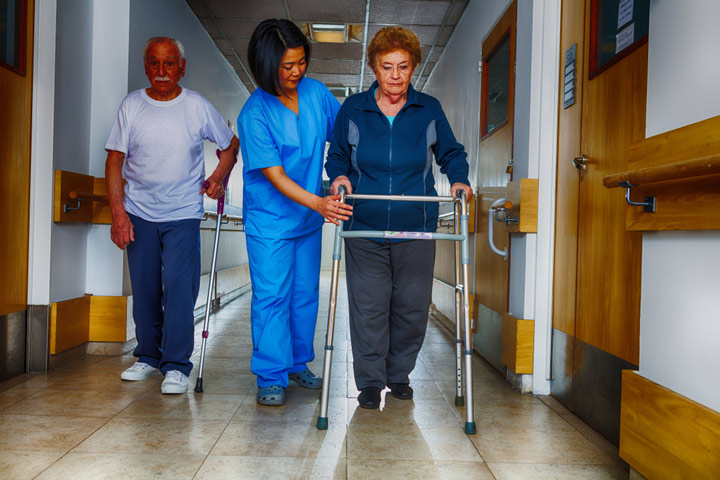




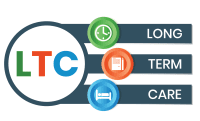

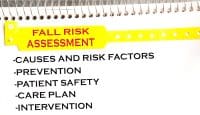



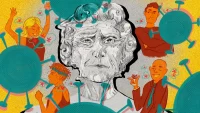
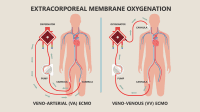




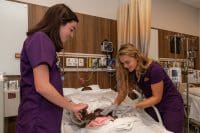
2 Comments. Leave new
this guideline has a success
this training is very helpful